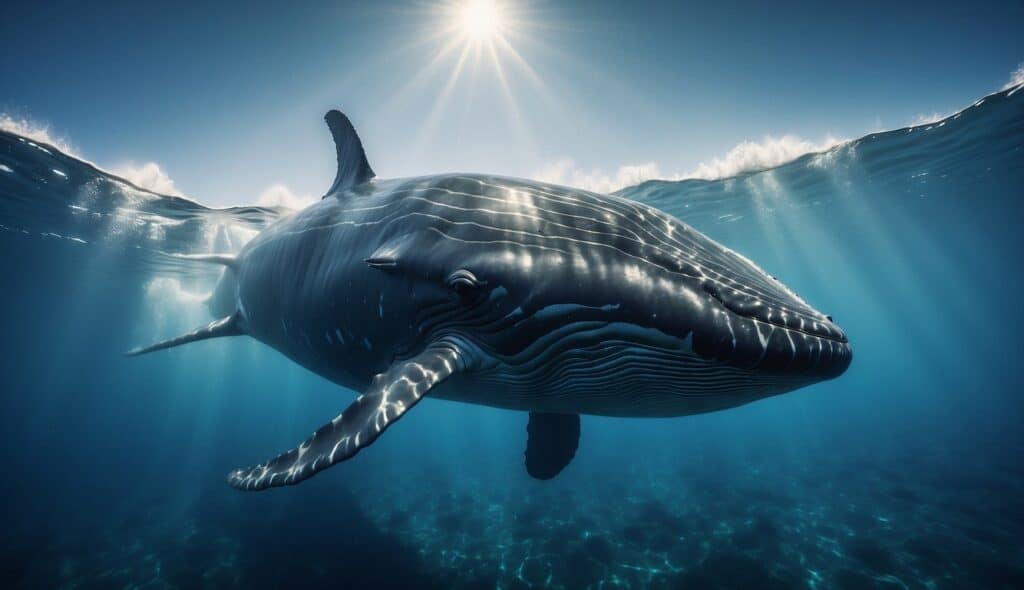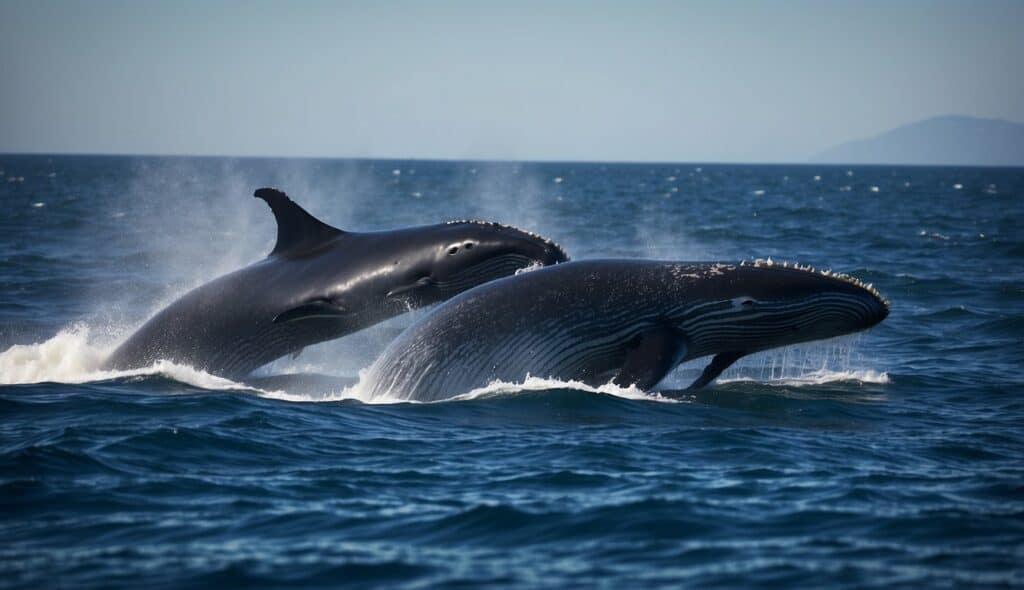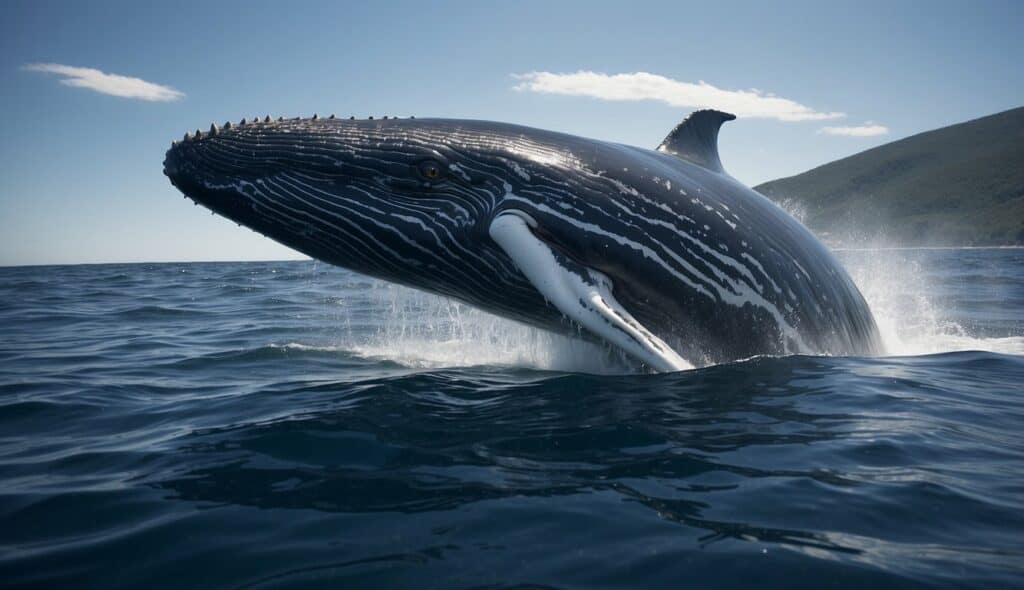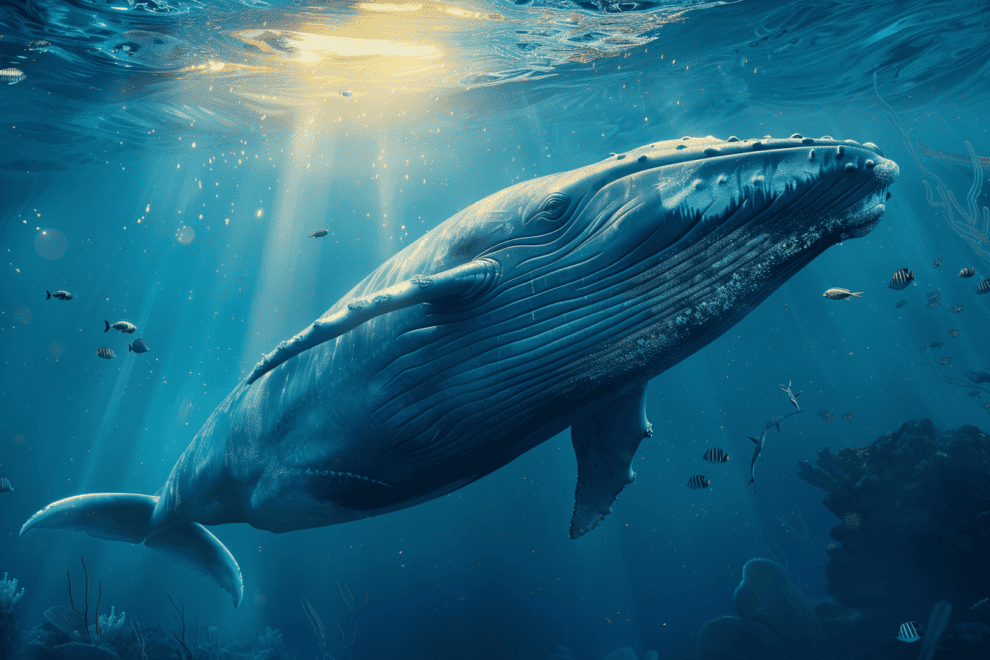Blue whales are the largest animals that have ever existed on Earth. These magnificent creatures can grow up to 100 feet long and weigh as much as 200 tons.
They are found in oceans all around the world, and their size and beauty have captivated people for centuries.

One of the most remarkable things about blue whales is the size of their hearts. In fact, their hearts are so enormous that they are the largest hearts in the animal kingdom. A blue whale’s heart can weigh up to 400 pounds, which is about the same weight as a gorilla.
It’s roughly the size of a small car, and a child could crawl through the arteries inside it. This incredible organ is essential for the blue whale’s survival, as it helps to pump blood through their massive bodies.
Anatomy of a Giant
Blue whales are the largest animals that have ever existed on the planet. Their bodies can grow up to 100 feet (30 meters) long and weigh as much as 200 tons, which is equivalent to the weight of a school bus.
These massive creatures have unique features that set them apart from other baleen whales. For instance, blue whales have a heart that is as big as a small car, weighing around 400 pounds (180 kg).
The size of their heart is proportional to their body size, and it pumps up to 10,000 liters of blood per minute. This is necessary for their survival since they need a lot of oxygen to sustain their massive bodies.
Blue whales have an incredible ability to hold their breath for up to 30 minutes, diving to depths of up to 500 meters (1,640 feet) to feed on krill.
Unique Features
One of the unique features of blue whales is their baleen, which is a comb-like structure that filters food from the water.
Unlike toothed whales, which hunt for prey, baleen whales feed on tiny shrimp-like creatures called krill. Blue whales can consume up to 4 tons of krill per day, which is equivalent to around 40 million individual krill.
Another distinctive feature of blue whales is their blowhole, which is located on the top of their head. This allows them to breathe without having to surface completely.
When they exhale, they release a spout of water that can reach up to 30 feet (9 meters) high.
In terms of appearance, blue whales have a mottled bluish-grey body, which is why they are called blue whales. Their skin is covered in barnacles, which can grow up to a foot (30 cm) long. These barnacles are often used by scientists to estimate the age of the whale.
Blue Whale Behavior and Feeding

Blue whales are filter feeders, meaning that they consume tiny organisms such as krill and plankton by filtering them out of the water.
They use a method called lunge feeding, where they open their enormous mouths and take in large amounts of water and prey, then filter out the water through their baleen plates, leaving behind the food.
A single blue whale can consume up to 8,000 pounds of food each day, making them one of the most voracious predators in the ocean. Despite their size, blue whales feed primarily on small prey, which they must consume in large quantities to sustain their massive bodies.
Communication and Social Structure
Blue whales are highly social animals, traveling in groups called pods. These pods can consist of up to 100 individuals, with each pod having its own unique vocalizations, or songs.
These songs are used to communicate with other members of the pod, allowing them to coordinate their movements and hunting strategies.
Blue whales are also known for their ability to produce some of the loudest sounds in the animal kingdom, with their vocalizations reaching up to 188 decibels. This is louder than a jet engine and can be heard from over 500 miles away.
Migration Patterns
They are known to migrate long distances, traveling from their feeding grounds in the polar regions to their breeding grounds in the warmer waters near the equator.
During their migrations, blue whales are known to travel alone or in small groups, with larger pods forming during the breeding season.
These migrations can cover thousands of miles and can take several months to complete.
Human Impact On Blue Whales – Conservation and Threats

Blue whales are majestic marine mammals that are threatened by a variety of human activities. One of the most significant threats to their survival is overfishing.
Blue whales feed on krill, which is a small shrimp-like animal that is a vital part of the ocean’s food web. Overfishing of krill can lead to a decline in blue whale populations, as they struggle to find enough food to survive.
Another significant threat to blue whales is pollution. As the world’s oceans become increasingly polluted, toxins build up in the food chain, eventually reaching the largest predators, like blue whales.
These toxins can cause a range of health problems, including cancer, reproductive failure, and weakened immune systems.
Ship strikes are also a significant threat to blue whales. As shipping traffic increases, the likelihood of a blue whale being struck by a ship also increases.
These collisions can be fatal, and even non-fatal strikes can cause severe injuries that can impact a whale’s ability to feed and survive.
Natural Challenges
Blue whales also face natural challenges that impact their survival. Climate change is one such challenge.
As the world’s oceans warm, the distribution of krill changes, making it harder for blue whales to find food. Changes in ocean currents and sea ice can also impact the availability of krill, further exacerbating the problem.
Predators like orcas also pose a threat to blue whales. While orcas are not a significant threat to adult blue whales, they can prey on younger, weaker individuals.
This predation can impact the global population of blue whales, making it harder for the species to recover from other threats.
Frequently Asked Questions

How does the heart of a blue whale compare to the size of other animals’ hearts?
The heart of a blue whale is the largest heart of any animal on Earth. It can weigh as much as 1,000 pounds (450 kg) and is about the size of a small car. To put this into perspective, the heart of a blue whale is roughly the size of four average-sized humans.
What factors are contributing to the endangerment of blue whales?
Blue whales are considered an endangered species due to several factors. One of the primary reasons is commercial whaling, which severely depleted their population in the 20th century. Today, they face threats such as climate change, ocean pollution, and habitat loss.
Can you describe the typical habitat of blue whales in the ocean?
Blue whales are found in all of the world’s oceans, but they tend to prefer colder waters, such as those found in the Arctic and Antarctic regions.
They are known to migrate long distances to feed and breed, and they often travel in groups called pods.
How much does an average blue whale weigh?
An average blue whale can weigh up to 200 tons (181 metric tonnes), which is equivalent to the weight of about 33 elephants. Despite their massive size, blue whales feed primarily on small shrimp-like creatures called krill.
What is the current population of blue whales worldwide as of 2024?
As of 2024, the current population of blue whales worldwide is estimated to be around 10,000 to 25,000 individuals. While this is an improvement from their critically low numbers in the early 20th century, they still remain an endangered species.
What are the main threats to blue whales in today’s oceans?
The main threats to blue whales in today’s oceans include commercial whaling, climate change, and ocean pollution. Additionally, habitat loss is also a significant threat.
Collisions with ships and entanglement in fishing gear are also significant threats to their survival.









